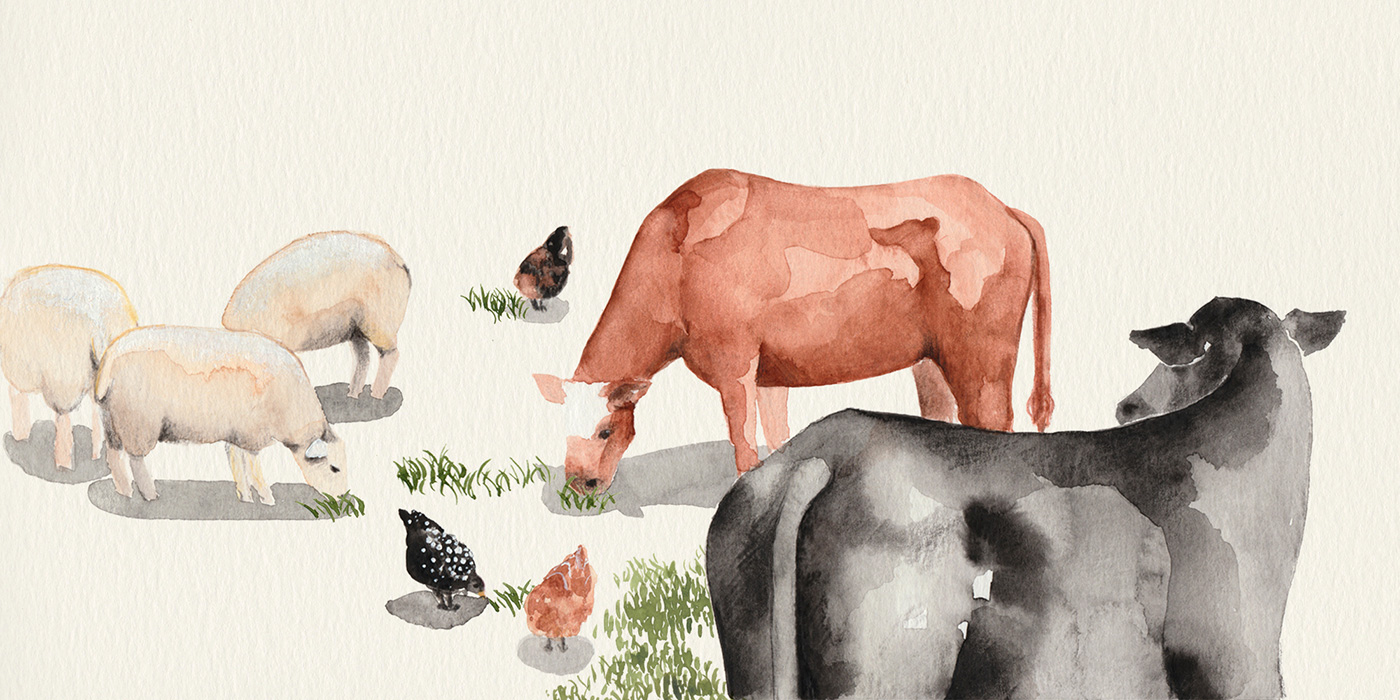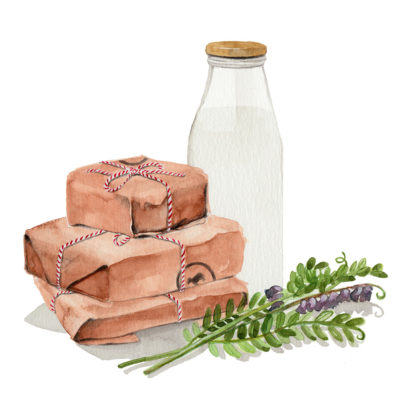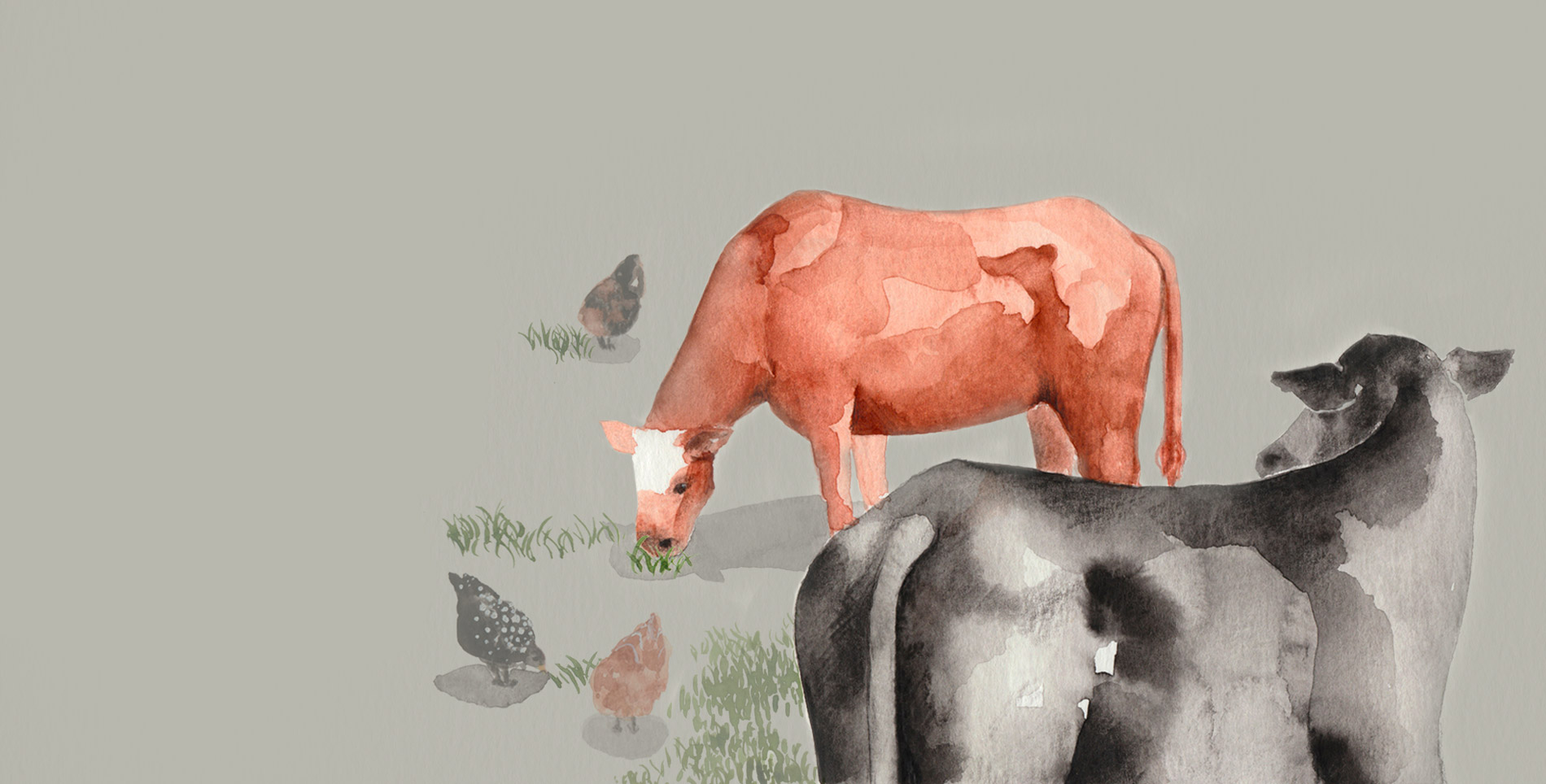As humans, we’re essentially carbon beings strung together by molecules of oxygen, nitrogen and hydrogen in varying degrees—as are virtually all forms of living matter. And as such, we’re not isolated entities. We’re part of the circle of life—one that is cyclical, nonlinear. But we often forget that we’re usually the last link, not necessarily the one who bears the most weight. At the top of the food chain, it can be hard for us to sense that the earth is really where we come from. Can something so ubiquitous as a blade of grass, as commonplace as a mound of dirt, really be worth fighting for?
The answer is yes, to anyone who eats of it. By now, we’re aware that diet can determine many outcomes; a glance inside our cupboards gives clues as to our current state of health. But to really grasp the magnitude of that effect, we need to examine the source of everything we eat; and that brings us to the ways in which plants impact animals—whether that animal is us, or our main course—and why each of those seeds and stalks really matter. We learn this from the ones who close the loop between start and finish of the food chain, the ones who best understand this rooted, webbed notion of life. They are the farmers, the ones who understand the food chain is balanced; and if we plan to partake in it, we need to step back and see all links.
“I often say we are primarily grass farmers,” says Charleston-based Celeste Albers, who, together with her husband, George, has raised organic vegetables, free-range eggs, and heritage pork since 1994. “What we truly are [are] stewards of the soil. Without healthy balanced soil, we cannot produce healthy plants. Without healthy plants, we cannot grow healthy cows capable of producing high quality milk and beef.”
Albers’ passion stems from a personal mission to satisfy what she believes to be the greatest need of her community. It’s a simple one: food that nourishes. She’s big on the idea that raw milk and grass-fed beef are two of the best ways to offer that nourishment, and that begins with what the cow itself consumes.
“The cow is a very unique animal,” Albers continues. “She can turn sunshine (photosynthesis) into milk and muscle. Her chambered stomach can break down plant material through rumination and extract energy and nutrients that omnivores could never access. I visualize the cow as the soil in mammal form; the microbial activity of the healthy soil is reflected in the microbial activity of the healthy rumen.”

This is the first step: a happy gut makes a happy cow, and we want those happy cows. Albers goes on to explain, “A properly raised and fed cow produces beef which provides every mineral and trace element required for optimal human health. Grass-finished beef and grass-fed dairy products contain omega-3 fatty acids; grain-finished beef and conventionally-fed dairy products contain omega-6 fatty acids.” And this is where our interconnectedness comes into clearer focus. “Human health is dependent on a balance between omega-6 and -3. The Western diet is heavy in omega-6 fatty acids, so grass-fed cow products are an important part of a healthy diet.” As humans, we require these essential fatty acids (EFAs) and cannot produce either one, so we must acquire them through diet.
But it’s not all science—this is about flavor, too. Albers states you could just as easily chart the seasons by the flavor of her cows’ milk as you could by the pages of a calendar. In early spring, milk has a definite “grassy” taste, owing to the high percentage of ryegrass that the cows graze on in pasture. The flavor starts to mellow as clover takes over, with spikes in minerality from vetches, a type of flowering, leguminous plant. In mid-summer, the milk sweetens due to incoming crabgrass, adding notes of vanilla, and by the fall when grasses go to seed, the milk mellows once again. Through fall and winter to early spring, when forageable diversity is at its lowest, Albers supplements with high-quality hay. “The flavor of the milk is at its most benign when the cows are eating hay,” she says.
Dustin Noble, who raises goats for his Noble Springs Dairy in Franklin, Tennessee, reports similar flavor findings. “Our animals consume forages from pasture, alfalfa hay and a pelleted feed. The alfalfa and feed help supplement the pasture and provide more protein, fat and calcium than the forages can [otherwise] provide,” says Noble. “During the spring when the grass is more lush and green, you can taste a really fresh, grassy flavor in the products.” In an increasingly disconnected world, these are subtle reminders that tether us to the big picture—keeping our feet on the ground and our palates there, too.
This dynamic, earthly influence on flavor can also be found with meat. So could standardizing feed eclipse the true flavor of certain animals? Sam Kennedy seems to think so. He raises South Poll grass cattle, Katahdin sheep and meat chickens out of Glendale Farms in Columbia, Tennessee. “Our chickens actually have a flavor and don’t just taste like whatever condiment you put on them,” he explains. “The primary difference is their access to a diversified diet in the pasture, no stress in travel off the farm, and clean processing.”
And part of that diet includes something we’ve all mostly considered an innocuous part of everyday life—grass. Those little blades that are key to sustaining and delivering the kind of meal worth eating. Kennedy continues, “When you are trying to properly finish an animal on grass, there are only certain times of the year when pastures have adequate energy and nutrition, primarily late spring and early summer.” He also describes the flavor of lambs finished on non-GMO corn as milder, but also distinctive.
Albers weighs in as well: “A cow finished on actively growing, mixed plant pasture is going to have a better flavor than one finished on hay or poor quality pasture.” She explains how lower quality feed can transform the flavor of the meat. “It is my opinion that this objectionable taste comes from cows on poor quality pasture being supplemented with soy hulls, which are permitted by the USDA to be given to ‘grass-fed’ animals.”

Nashville farmer Greg Stroud takes a different approach for his black angus beef cattle: whiskey mash. He picks up leftover mix of non-GMO corn, wheat and barley—otherwise known as spent mash—from local Greenbrier Distillery once the fermented alcohol has been distilled off. “The mash has very high nutritional values,” says Stroud. “It has roughly 24-35% protein and the starch and sugar have been cooked out, which makes it easier for cows to digest. Also, it has high water content, which help keeps the cattle hydrated.” And perhaps not surprisingly, he concludes, “Cattle love the mash!”
Happy cows, indeed. Maybe this is our lynchpin, what brings it all full circle. It’s not just about the soil. Or the plants. Or even the grains the plants can yield. There’s an enjoyment factor to consider, and that serves as both our unifier and our lens.
“Animal husbandry for ages has taught that … humane treatment is critical to a quality product,” Kennedy emphasizes. “Even before an animal’s final hour, a happy animal in nature is healthier and gets fat (not obese). Stress creates sickness in animals and humans, which creates bodies that are nutritionally out of balance and consequently off-flavored meat. An animal that is allowed to naturally express itself will be happier, will be balanced nutritionally, and will ultimately produce a meat that provides the same benefits.”
Albers ends on similar note. “I believe that how an animal is handled has a direct effect on quality as well. Every cow on the farm was born on the farm and has a name,” she says. “I feel there is no better way to honor the animal you consume than to have a relationship with the animal itself or those who raise it.”
Ultimately, quality is in the connection. From root to tip, we’re all in this together.
- “A review of fatty acid profiles and antioxidant content in grass-fed and grain-fed beef.” Nutrition Journal, 2010, Volume 9, Number 1, Page 1 Cynthia A Daley, Amber Abbott, Patrick S Doyle, Glenn A Nader, Stephanie Larson
- Ruxton CHS, Reed SC, Simpson JA, Millington KJ: The health benefits of omega-3 polyunsaturated fatty acids: a review of the evidence. The Journal of Human Nutrition and Dietetics. 2004, 17: 449-59. 10.1111/j.1365-277X.2004.00552.x.
- Simopoulos A: Omega-3 fatty acids in health and disease and in growth and development. American Journal of Clinical Nutrition. 1991, 54: 438-63.



Our comments section is for members only.
Join today to gain exclusive access.